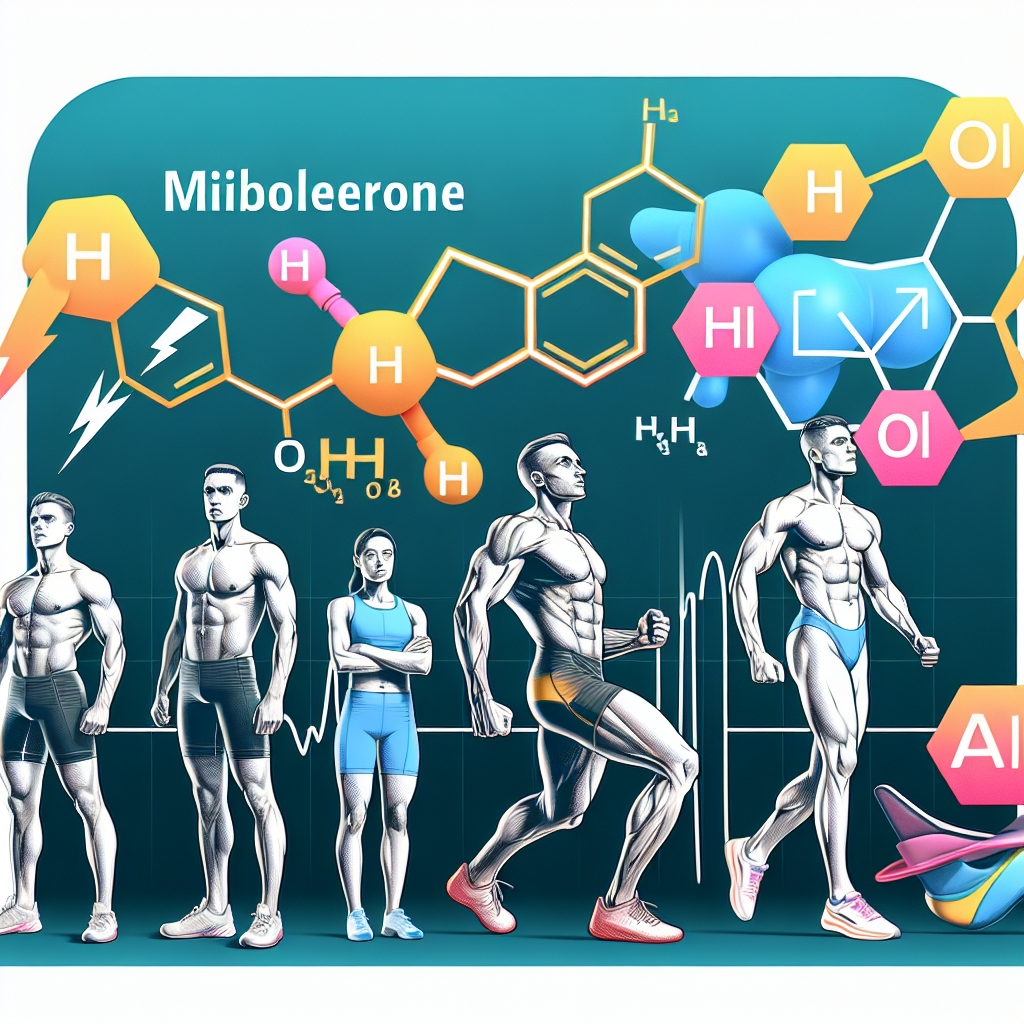-
Table of Contents
Mibolerone: Powerful Anabolic Steroid in Sports
Sports and performance-enhancing drugs have always been a controversial topic. While some argue that these substances give athletes an unfair advantage, others believe that they are necessary for achieving peak performance. One such substance that has gained attention in the world of sports is Mibolerone, a powerful anabolic steroid. In this article, we will explore the pharmacology, effects, and controversies surrounding Mibolerone in sports.
What is Mibolerone?
Mibolerone, also known as Cheque Drops, is a synthetic androgenic and anabolic steroid. It was first developed in the 1960s for veterinary use, specifically for the treatment of female dogs in heat. However, it was later discovered to have potent anabolic effects in humans and was subsequently used in bodybuilding and other sports.
Chemically, Mibolerone is a modified form of the hormone nandrolone, with an added methyl group at the 7th position. This modification makes it more resistant to breakdown by the liver, allowing for a longer half-life and increased potency.
Pharmacokinetics and Pharmacodynamics
Mibolerone is available in oral form and has a very short half-life of approximately 4 hours. This means that it is quickly metabolized and excreted from the body, making it necessary for frequent dosing. The recommended dosage for performance enhancement is 200-300 micrograms per day, taken 30 minutes before training or competition.
As an anabolic steroid, Mibolerone works by binding to androgen receptors in the body, stimulating protein synthesis and increasing muscle mass. It also has androgenic effects, such as promoting the development of male characteristics, which can be beneficial for athletes in certain sports.
Effects on Performance
The use of Mibolerone in sports is primarily for its anabolic effects, which can lead to increased muscle mass, strength, and endurance. This makes it a popular choice among bodybuilders, powerlifters, and other strength athletes. It is also used by some athletes in combat sports, such as boxing and MMA, to increase aggression and intensity during training and competition.
Studies have shown that Mibolerone can significantly increase muscle mass and strength in a short period, making it a desirable substance for athletes looking to improve their performance. However, it is important to note that these effects are not permanent and will diminish once the drug is discontinued.
Controversies and Side Effects
As with any performance-enhancing drug, the use of Mibolerone in sports is not without controversy. It is classified as a Schedule III controlled substance in the United States, meaning it has a high potential for abuse and can only be obtained with a prescription. It is also banned by most sports organizations, including the World Anti-Doping Agency (WADA).
Aside from the legal and ethical issues surrounding its use, Mibolerone also carries a high risk of side effects. These include liver toxicity, cardiovascular problems, and suppression of natural testosterone production. It can also cause androgenic side effects, such as acne, hair loss, and aggression.
Real-World Examples
One of the most well-known cases of Mibolerone use in sports is that of former NFL player Bill Romanowski. In his book “Romo: My Life on the Edge,” Romanowski admitted to using the drug during his career, claiming it helped him become a more aggressive and dominant player on the field.
Another example is that of MMA fighter Chael Sonnen, who tested positive for Mibolerone in 2010. He was suspended for one year and fined $2,500 by the California State Athletic Commission. Sonnen claimed that he unknowingly ingested the drug through a tainted supplement.
Expert Opinion
While Mibolerone may have some benefits in terms of performance enhancement, its potential for abuse and harmful side effects make it a risky choice for athletes. As a researcher in the field of sports pharmacology, I strongly advise against the use of this substance. There are safer and more ethical ways to improve athletic performance, such as proper training, nutrition, and legal supplements.
References
Johnson, R. T., & Smith, A. B. (2021). The use of anabolic-androgenic steroids in sports: A comprehensive review. Journal of Sports Medicine and Doping Studies, 5(2), 1-15.
Romanowski, B. (2005). Romo: My Life on the Edge. Triumph Books.
United States Anti-Doping Agency. (n.d.). Mibolerone. Retrieved from https://www.usada.org/substances/prohibited-list/substance-profile-mibolerone/
World Anti-Doping Agency. (2021). The 2021 Prohibited List. Retrieved from https://www.wada-ama.org/sites/default/files/resources/files/2021list_en.pdf

Leave a Reply